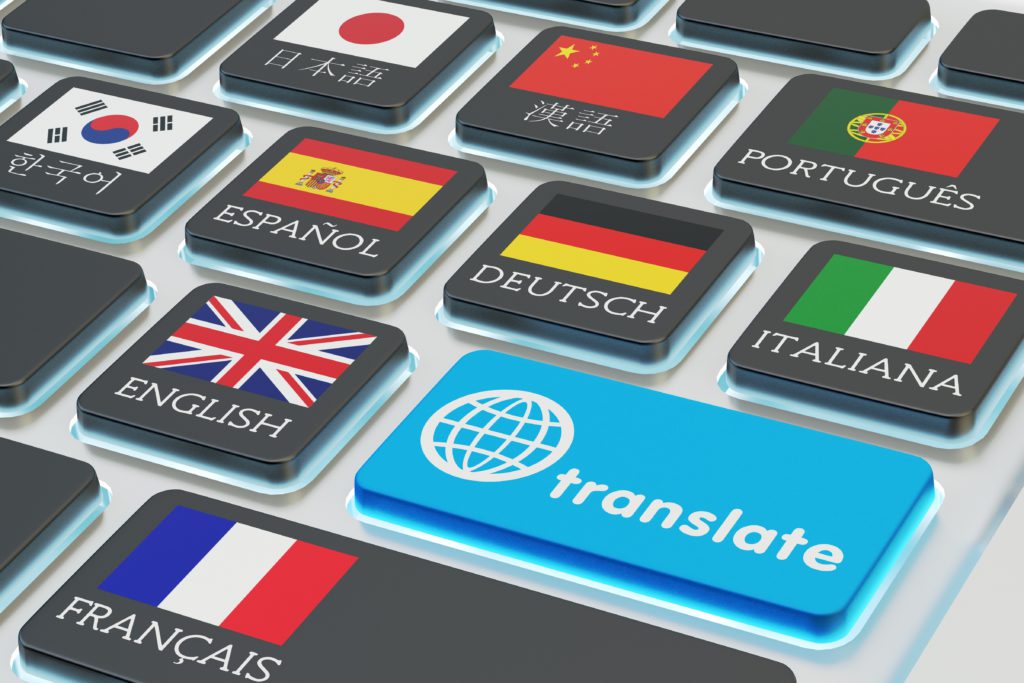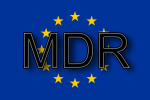Abstract
This article provides an example of the translation process of the UI of an embedded medical device and the potential ways to improve and optimize such a process.

Stages of UI Translation Process
The translation process of the UI of embedded medical devices normally consists of several stages:
- Planning
- Tooling and communication
- Exporting English strings and importing translations
Planning
The required memory of the embedded medical device for the translated UI strings and fonts must be taken into account in the planning stage. The available memory strongly influences the decision of how many and which languages the device could support using some UI frameworks. Therefore, this decision must be thoroughly made from the start of the software and hardware development process.
Tooling and Communication
The translation process often involves different teams or even different companies. These teams usually include the translation office which involves linguists and the development team which mainly consists of software developers. In addition, the marketing team usually needs to review the translated UI for a specific market or language. Therefore, the coordination and communication channels between these different teams and the necessary tools should be arranged at an early stage of the translation process.
For instance, the exchange of files containing UI strings and their translations should be organized. These files should be easily accessible by the translation office to provide translations. Moreover, the development team needs these files to obtain translations and apply them to the UI. Furthermore, the format of the translation files should be agreed upon by all involved parties to optimize and automate the process of the extraction and application of translations on the UI.
It is also highly recommended to hold a retrospective meeting at the end of each translation iteration. The purpose of this meeting is to reflect on the translation process and to discuss the ways to improve it in the future.
Exporting Source Strings for Translations
Source strings are texts provided by the requirements and design specifications of the UI, e.g. English strings, which should be translated by the linguists of the translation office.
The development team of the UI creates a file containing the set of UI English strings which should be translated. For example, an XLIFF (XML Localization Interchange File Format) file can be used for this purpose. It is recommended to create a script that automates this step by automatically extracting the UI strings from the requirements and design specifications document or UI project file into an XLIFF file.
Target strings in the XLIFF file are left empty as they will contain the translations provided by the translation office. For example, if the string of a cancel button displayed on a modal dialogue on the UI is to be translated, the English string shall be added to the XLIFF file as a source string. In addition, the development team can insert the important notes extracted from the requirements and design specifications. These notes include for example the description and context of the string which are helpful for the translation office. The following code shows a snippet of an XLIFF file for the previously mentioned example.
<unit id="1" name="ID_CANCEL_BUTTON">
<segment>
<source>Cancel</source>
<target> </target>
</segment>
<notes>
<note category="Description">Cancel Modal dialogue button</note>
</notes>
</unit>
The XLIFF file is then sent to the translation office to obtain the required translations (target strings) of the source strings.

Importing Target Strings
Firstly, the translation file e.g. XLIFF file that contains the source strings is received by the translation office. Secondly, the translation office provides the translations of the provided source strings. For example, the German translation of the cancel button string illustrated in the previous stage is added to the XLIFF file by the translation office:
<unit id="1" name="ID_CANCEL_BUTTON">
<segment>
<source>Cancel</source>
<target>Abbrechen</target>
</segment>
<notes>
<note category="Description">Cancel Modal dialogue button</note>
</notes>
</unit>
Finally, the translations are extracted from the updated XLIFF file into the UI project file. This can be done using an integrated functionality of the UI framework tool. However, multiple XLIFF files for multiple languages might need to be imported into the UI. In this case, the development team should create a script to extract the translated strings from all XLIFF files into the UI project file at once.

Summary
To sum up, this article provides an example of the translation process of the User Interface of an embedded medical device. Furthermore, the article suggests possible improvement and optimization techniques of this process.


